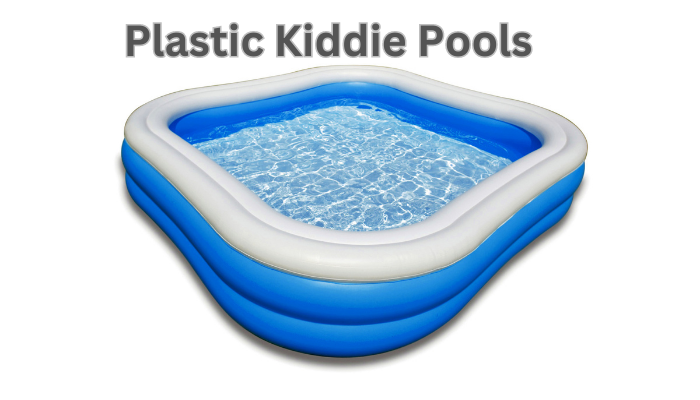Childhood is often synonymous with playful adventures, boundless imagination, and the delightful sound of laughter. One of the quintessential images of a joyful childhood is that of children frolicking in a plastic kiddie pool on a warm summer day. These simple yet enchanting pools have been a staple of many childhoods, providing a space for young imaginations to run wild and for carefree splashes to create cherished memories. In this article, we delve into the world of plastic kiddie pools, exploring their history, benefits, and the significance they hold in offering a space where the magic of childhood comes to life.
1. A Brief History of Plastic Kiddie Pools: A Splash of Fun and Childhood Memories.
The concept of the kiddie pool dates back several decades, evolving from the larger and more complex pools found in aquatic centres and private backyards. As suburban living gained popularity in the mid-20th century, families sought ways to create recreational spaces that catered specifically to their children’s needs. This desire led to the creation of smaller, shallow pools that could be easily set up and filled with water for children to enjoy.
Early kiddie pools were often made from materials like canvas or rubberized fabric. These pools required careful maintenance and frequent emptying due to their permeable nature. However, with advancements in plastic technology, manufacturers began producing plastic kiddie pools that were not only durable but also more convenient to use. The introduction of plastic kiddie pools marked a turning point in the way children experienced water play, making it more accessible and enjoyable.
Benefits of Plastic Kiddie Pools
1. Safe Water Play: Plastic kiddie pools provide a controlled environment for children to interact with water. With shallow depths and limited space, parents can supervise their children closely, ensuring their safety and well-being.
2. Introduction to Water: For toddlers and young children, stepping into a larger pool can be intimidating. Plastic kiddie pools offer an opportunity for gradual acclimatization to water, allowing children to build comfort and confidence before moving on to larger aquatic settings.
3. Physical Activity: Engaging in water play offers numerous physical benefits. Splashing, paddling, and moving around in the pool contribute to cardiovascular health, muscle development, and improved coordination.
4. Imagination and Creativity: A plastic kiddie pool is not merely a container of water; it’s a canvas for imaginative play. Children transform the pool into a stage for storytelling, role-playing, and creative adventures.
5. Social Interaction: Kiddie pools encourage social interaction and cooperative play. Children often gather around these pools to play games, share toys, and learn the art of communication and collaboration.
6. Outdoor Engagement: In today’s digital age, spending time outdoors is essential for children’s overall well-being. Kiddie pools entice children away from screens and into the fresh air, fostering a connection with nature.
7. Family Bonding: Setting up and enjoying a plastic kiddie pool can become a family activity. Parents and siblings can join in the water fun, creating opportunities for quality bonding time and shared laughter.
8. Temporary Setup: Plastic kiddie pools offer the convenience of temporary installation. They can be easily inflated, filled with water, and emptied when not in use. This flexibility suits families who may have limited outdoor space.
The Symbolism of Childhood Joy
Beyond their physical attributes and benefits, plastic kiddie pools symbolize the pure and unadulterated joy of childhood. These pools evoke a sense of nostalgia for parents and adults who once experienced the exhilaration of splashing around in their own kiddie pools. The sight of a child’s eyes lighting up at the prospect of stepping into the water or the sound of contagious laughter echoing as water droplets fly through the air are testaments to the magic that these simple pools can conjure.
In an age where technology often dominates children’s attention, the humble plastic kiddie pool offers a refuge—a realm where young minds can disconnect from screens and immerse themselves in sensory experiences. The sensation of water, the sensation of touch, and the sensation of shared moments with friends and family create a rich tapestry of childhood memories.
Conclusion
The plastic kiddie pool is not merely a utilitarian object; it is a vessel for creating memories that stand the test of time. Its significance goes beyond its physical presence, extending into the realm of emotion, imagination, and the cherished essence of childhood. As children dip their toes into the water, they step into a world of boundless possibilities, where every splash is an expression of joy, every ripple is a dance, and every drop is a reminder of the magic that lies within the simplest of things.

